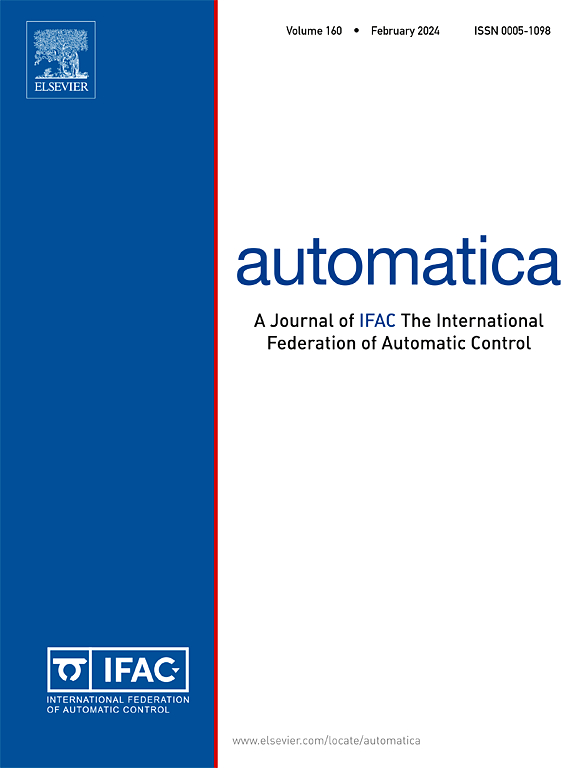杜宾飞行器曲率不连续最小的轨迹延伸策略
IF 5.9
2区 计算机科学
Q1 AUTOMATION & CONTROL SYSTEMS
引用次数: 0
摘要
在本文中,我们提出了在任意两个给定的定向点之间设计任意长度的曲率有界轨迹的策略。所提出的轨迹由三个不同半径的圆弧串联而成。这样的轨迹保证了完全覆盖可达长度的最大集合,同时在所有情况下将轨迹上的切换点数量最小化到最多两个。此外,利用内切圆的概念,我们将圆-圆-圆轨迹集扩展为8种路径,包括{LLL,LLR,LRR,LRL,RRL,RLL,RLR,RRR}路径。本文给出了所提出的弹道的数学表达式,并给出了每种弹道存在的条件和分类。我们还分析了使用合适的延伸策略的轨迹长度的变化,并导出了所有定向点对的可达长度集。此外,我们强调了任意可行期望长度的多个轨迹存在的条件。最后,用数值模拟说明了本文的结果。本文章由计算机程序翻译,如有差异,请以英文原文为准。
Trajectory elongation strategies with minimum curvature discontinuities for a Dubins vehicle
In this paper, we present strategies for designing curvature-bounded trajectories of any desired length between any two given oriented points. The proposed trajectory is constructed by the concatenation of three circular arcs of varying radii. Such a trajectory guarantees a complete coverage of the maximum set of reachable lengths while minimising the number of changeover points in the trajectory to a maximum of two under all scenarios. Additionally by using the notion of internally tangent circles, we expand the set of Circle-Circle-Circle trajectories to eight kinds, consisting of paths. The paper presents a mathematical formulation of the proposed trajectory and the conditions for the existence and classification of each kind of trajectory. We also analyse the variation of the length of the trajectory using suitable elongation strategies and derive the set of reachable lengths for all pairs of oriented points. Moreover, we highlight the conditions required for the existence of multiple trajectories of any feasible desired length Finally, the results of this paper are illustrated using numerical simulations.
求助全文
通过发布文献求助,成功后即可免费获取论文全文。
去求助
来源期刊

Automatica
工程技术-工程:电子与电气
CiteScore
10.70
自引率
7.80%
发文量
617
审稿时长
5 months
期刊介绍:
Automatica is a leading archival publication in the field of systems and control. The field encompasses today a broad set of areas and topics, and is thriving not only within itself but also in terms of its impact on other fields, such as communications, computers, biology, energy and economics. Since its inception in 1963, Automatica has kept abreast with the evolution of the field over the years, and has emerged as a leading publication driving the trends in the field.
After being founded in 1963, Automatica became a journal of the International Federation of Automatic Control (IFAC) in 1969. It features a characteristic blend of theoretical and applied papers of archival, lasting value, reporting cutting edge research results by authors across the globe. It features articles in distinct categories, including regular, brief and survey papers, technical communiqués, correspondence items, as well as reviews on published books of interest to the readership. It occasionally publishes special issues on emerging new topics or established mature topics of interest to a broad audience.
Automatica solicits original high-quality contributions in all the categories listed above, and in all areas of systems and control interpreted in a broad sense and evolving constantly. They may be submitted directly to a subject editor or to the Editor-in-Chief if not sure about the subject area. Editorial procedures in place assure careful, fair, and prompt handling of all submitted articles. Accepted papers appear in the journal in the shortest time feasible given production time constraints.
 求助内容:
求助内容: 应助结果提醒方式:
应助结果提醒方式:


